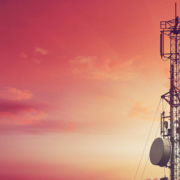EMF Sensitivity: What It Is, and Do You Have It?
Like the sun and our cellphones, we generate our own electromagnetic fields. Everything we do voluntarily and involuntarily relies on the electrical signals that course through our bodies and carry with them specific instructions for infinite functions. As electrical beings, we are affected by external sources of electromagnetic fields (EMFs), both natural and human-made. For this reason, we are all sensitive to EMFs, whether we noticeably feel their effects or not.
EMF sensitivity is nothing short of controversial in the realm of medicine and telecommunications, but the truth is in how we feel and lies deeper than superficial studies that support 5G.
What Is Electromagnetic Hypersensitivity?
Electromagnetic hypersensitivity (EHS) is “a condition defined by the attribution of non-specific symptoms to electromagnetic fields (EMFs) of anthropogenic origin.” In other words, physically and/or psychologically feeling one or any combination of symptoms when in the presence of human-made EMFs from sources like Wi-Fi routers, Bluetooth-connected devices, and essentially anything relying on electricity to work.
Electromagnetic hypersensitivity is interchangeable with EMF sensitivity and is also referred to as electromagnetic hypersensitivity syndrome, microwave syndrome, and Wi-Fi allergies. Anthropogenic electromagnetic fields are everywhere. It is nearly impossible to escape them unless, of course, you are living far outside the reaches of civilization and sustaining without a single watt of electricity.
The reality is, as technology continues to burrow its way deeper into every aspect of our lives, more of us will begin to feel its noticeable negative effects—it’s inevitable. But for now, those of us who do take notice, whether in our moods, sleep patterns, or energy levels, hold the label electromagnetic hypersensitive.
Is EMF Sensitivity Real?
In short, yes!
One prevailing discrepancy comes from the many studies on the effects of low to mid-frequency human-made electromagnetic fields and what “safe levels” of radiofrequency radiation (RFR) are really only looking at the thermal effects, or how EMFs heat our tissues, and the potential consequences of sporadic interactions, as our interactions used to be.
The real danger of EMF exposure is believed by some researchers to be linked to the non-thermal effects on our tissues, organs, and cells, and the fact that our interaction with EMFs is now nearly constant.
It might come as a shock to learn that the Federal Communication Commission set the safe exposure limits for radiofrequency radiation in the late 1990s based on behavioral changes in rats. No changes have been made to those limits since, despite the changes in our relationship with technology.
According to Scientific American writer Joel M. Moskowitz, “more than 500 studies based on peer-reviewed research have found harmful biologic and health effects from exposure to RFR at intensities too low to cause significant heating.” By only looking at the thermal effects on rats, significant threat factors have been disregarded for decades at our health’s expense.

Not to mention in the late 1990s, we weren’t attached at the hip to our cellphone with a Bluetooth bud wedged in our ear at all waking hours. To believe or not to believe is not the question we should be asking because the answer isn’t one or the other. It’s not a belief-type matter. It’s the science-based reality that heavy doses of EMFs, which most of us are receiving around the clock, affect every one of us in some capacity because they are interacting with our own electromagnetic fields and internal electrical processes.
The symptoms manifest differently in each person, and sometimes that manifestation is initially undetectable or brushed off as something else. It’s understandably difficult to place blame on something you can’t physically see, taste, smell, or touch, not to mention accept that the thing so many of us are absolutely addicted to, our devices, is a source of our declining health.
A Train for Thought
The train of technology has been bullet-fast from the get-go and has left us in the tracks with little control over the levels of exposure we are now subjected to, as most public places have Wi-Fi, and to function in modern society, it is basically mandated that you have a smart device and are connected at all times.
“Connectivity for connectivity’s sake was a mistake. Why are we carrying it around on our bodies? We could dial it back, or we could stop moving so fast—we could stop ruining the night sky with satellites that will do nothing but bring super-fast internet to more people who will soon regret what it does to them,” writes The Atlantic staff writer Kaitlyn Tiffany in response to the unprecedented rate of telecommunication technology growth.
We went from “Hello, Mrs. Parker. This is Leon. May I please speak with Jenn?” to a cellphone in every palm starting before the double-digit years in what seems like the blink of an eye without really stopping to consider the neurological and psychological effects of constant digital connectivity; many of us are now beginning to feel those effects.
What Causes Electromagnetic Sensitivity
Cellphones, tablets, laptops, desktops, Wi-Fi routers, Bluetooth everything, smart meters, wearable technology, plasma television, microwaves, convection ovens, electric cars, powerlines, cell towers, 5G antennas, fluorescent lighting, copiers, printers, fax machines, computer hard drives, wall plugs, boom boxes, wireless baby monitors, broadcast towers, Doppler radar installations for weather monitoring—anything Wi-Fi and electricity-dependent—emits a non-ionizing electromagnetic field.
How many of these things do you interact with daily, and how many of them are you in near-constant contact with?

Electromagnetic sensitivity is the result of the bombardment of EMFs we are exposed to every day. Those who identify with or self-diagnose as being EMF sensitive tend to have very noticeable physical and emotional symptoms.
However, the accumulative effects of prolonged EMF exposure can result in life-altering conditions and consequences, such as biorhythm disruption, thyroid malfunction, reproduction complications, endocrine imbalance, and immune system compromise.
What Are the Symptoms of EHS?
The tricky thing about EHS, and perhaps in part why it has a reputation of being a pseudo syndrome or the result of the nocebo effect, is that the symptoms can be almost anything and can be symptoms that could potentially be linked to so many different things. This includes, but is not limited to, chronic fatigue, headaches, nausea, a burning sensation, heart arrhythmia, ringing in the ears, anxiety, sleep disruption, dizziness, and concentration difficulties.
If you experience one or several of these symptoms, you likely won’t jump to conclude that you are EMF hypersensitive. However, on your quest to identify the root of your symptoms so that you may one day be free of them, it’s not irrational to look at and truthfully examine your relationship with EMFs.
Dr. Thomas Rau of Switzerland’s Paracelsus Clinic also interestingly points out that “cultures have shown beneficial bacteria grow more slowly in the presence of electromagnetic fields allowing pathological organisms to dominate.”
He expresses that EHS is linked to many acute and chronic illness conditions, such as Lyme Disease, and that it is a “serious emerging public health issue globally and a subject which most doctors have no training.” And we all know how important our gut microbiome is to nearly every aspect of our wellbeing!
To place complete blame on EMFs isn’t fair, though, as we must take some responsibility for our actions and recognize our lifestyle choices, whether it’s what we decide to eat or how often we’re on the internet.
How Do You Treat EMF Sensitivity?
Trick question! You can’t treat EMF sensitivity.
The best way to lessen or eliminate the symptoms from EMF exposure is to reduce your interaction with them. And the good news is there are plenty of easy ways to do just that despite feeling like EMFs are everywhere.
One of the most effective mitigators is nature. Spending time outdoors can have profound effects on both your physical and mental health and offers the opportunity to take a break from technology—which has immediate benefits, as you’ll notice.”

What you’ll also find in nature that has become quite sparse in our urban environments are negative ions.
Basically, anything that emits an electromagnetic field also produces positive ions, which are harmful to the body when abundantly present. On the other hand, negative ions help support a high-performing immune system, regulate sleep patterns, maintain mental health, and promote oxygen absorption in the brain and body.
So, as you can see, negative ions can counteract the negative symptoms associated with EMF sensitivity. You can find these powerful little ions in immense numbers in the forest, by the sea, and next to running water, like a waterfall, among other natural places.
Could it really be as easy as spending more time outdoors connecting with nature and disconnecting from the digital world? Yes, yes, it can.
11 Things You Can Do at Home to Help Reduce Your EMF-related Symptoms
1. Turn off the Wi-Fi in your house when you go to bed.
2. Keep technology out of the bedroom.
3. Don’t install a smart meter in your home.
4. Avoid Bluetooth earbuds.
5. Switch out fluorescent light bulbs for LED or incandescent light bulbs.
6. Stop putting your laptop on your lap.
7. Skip the “smart products” you don’t need.
8. Keep your cellphone out of your pocket.
9. Distance your furniture from outlets.
10. Unplug anything you are not using.
11. Consider EMF shielding products like a cellphone case or laptop pad.
Disconnect to Reboot
Let’s face it; most of us are guilty of being totally hooked on technology—from our cellphones and smart TVs to our Wi-Fi routers and laptops that sit on our laps. It doesn’t have to be this way, though. In fact, we could collectively benefit from taking a step back and really evaluating what’s actually necessary and what’s just being forced upon us like 5G.
We weren’t put on the earth to sit inside all day and stare at screens; that’s not healthy in and of itself. Maintaining an essentially intravenous connection to the electromagnetic field generating devices and appliances is bound to take a toll on our sensitive and intricately designed minds and bodies, whether we want to accept it or not.

Too much-processed food, too many preservatives, too much meat, too much alcohol, too much time indoors, too many sedentary hours, and too much stress all lead to adverse health responses.
The same goes for too much exposure to electromagnetic fields; it’s as simple as that. It’s not that some people are immune to its effects, and others are not because they are more sensitive—we are all sensitive beings.
Technology and EMFs are here to stay, but our relationship with them doesn’t have to be constant. Their hold on our lives might be powerful, but we still have the power to take charge, disconnect, and rewire our relationship in the name of a healthier and happier life.
Disclaimer: The statements made in this article have not been evaluated by the Food and Drug Administration. Any products or treatments mentioned are not intended to diagnose, treat, cure, or prevent any disease. Please consult a licensed medical practitioner for medical advice.
At Innovative Medicine, we believe in transparency. We want you to know that we may participate in affiliate advertising programs pertaining to products mentioned herein.
See how we can help you restore complete health of body, mind & spirit.
Join our mailing list and receive exclusive offers + information!







Leave a Reply
Want to join the discussion?Feel free to contribute!